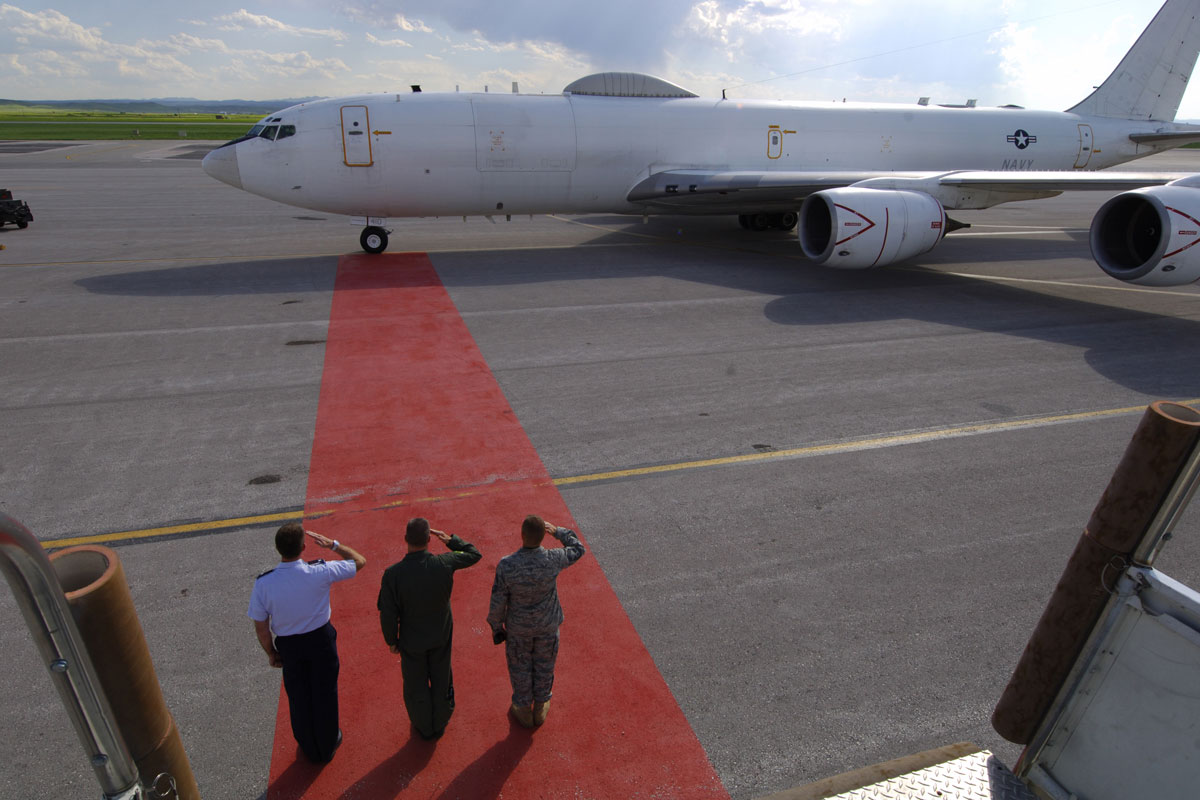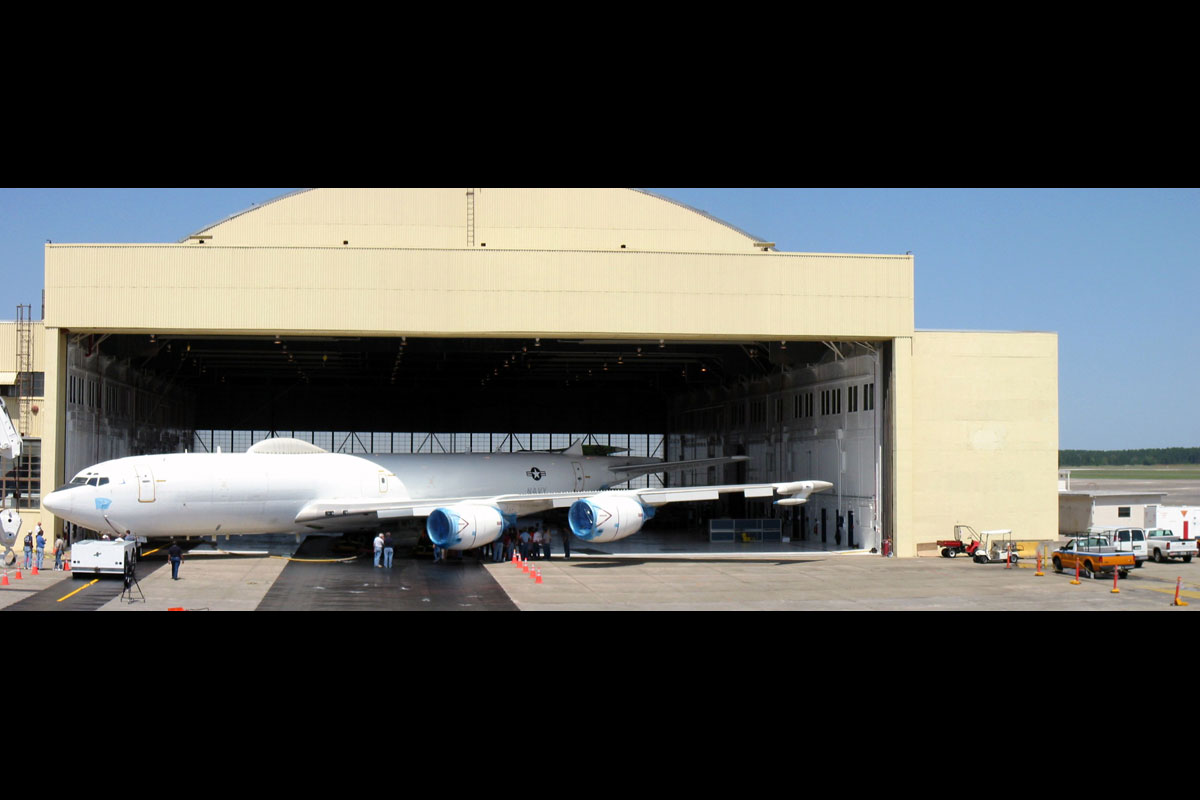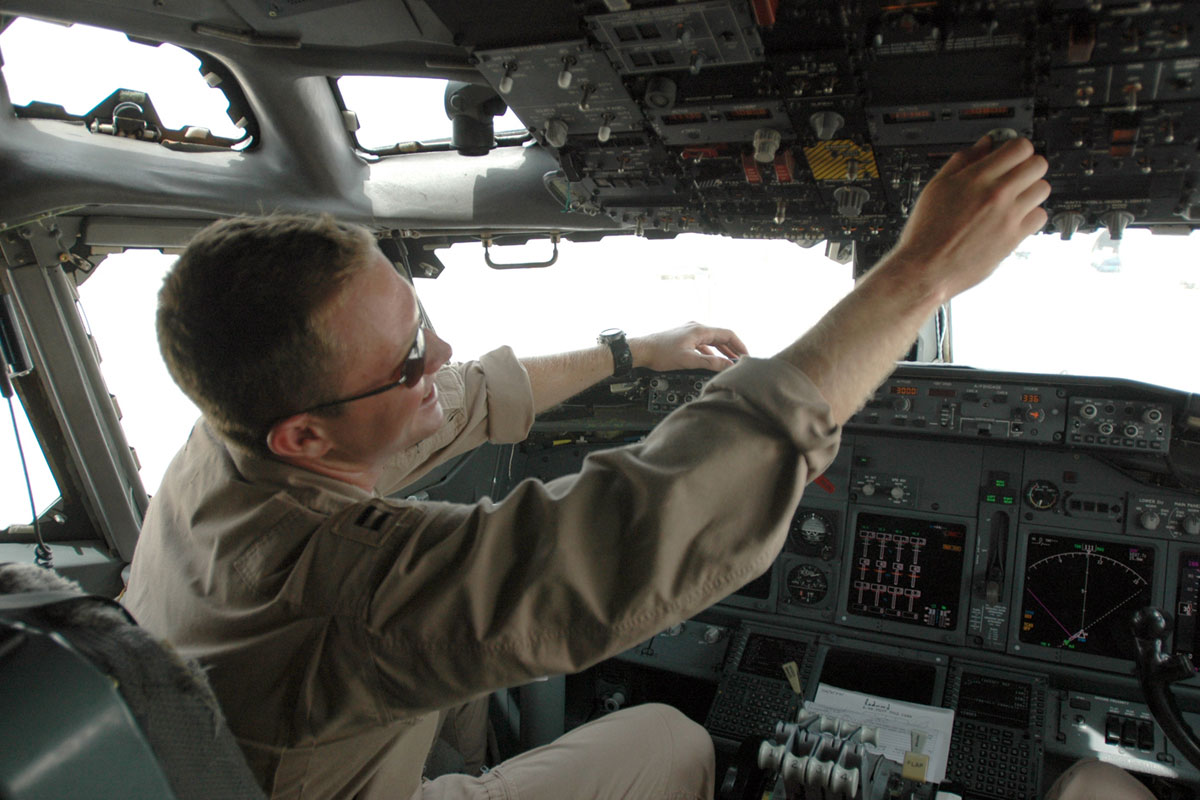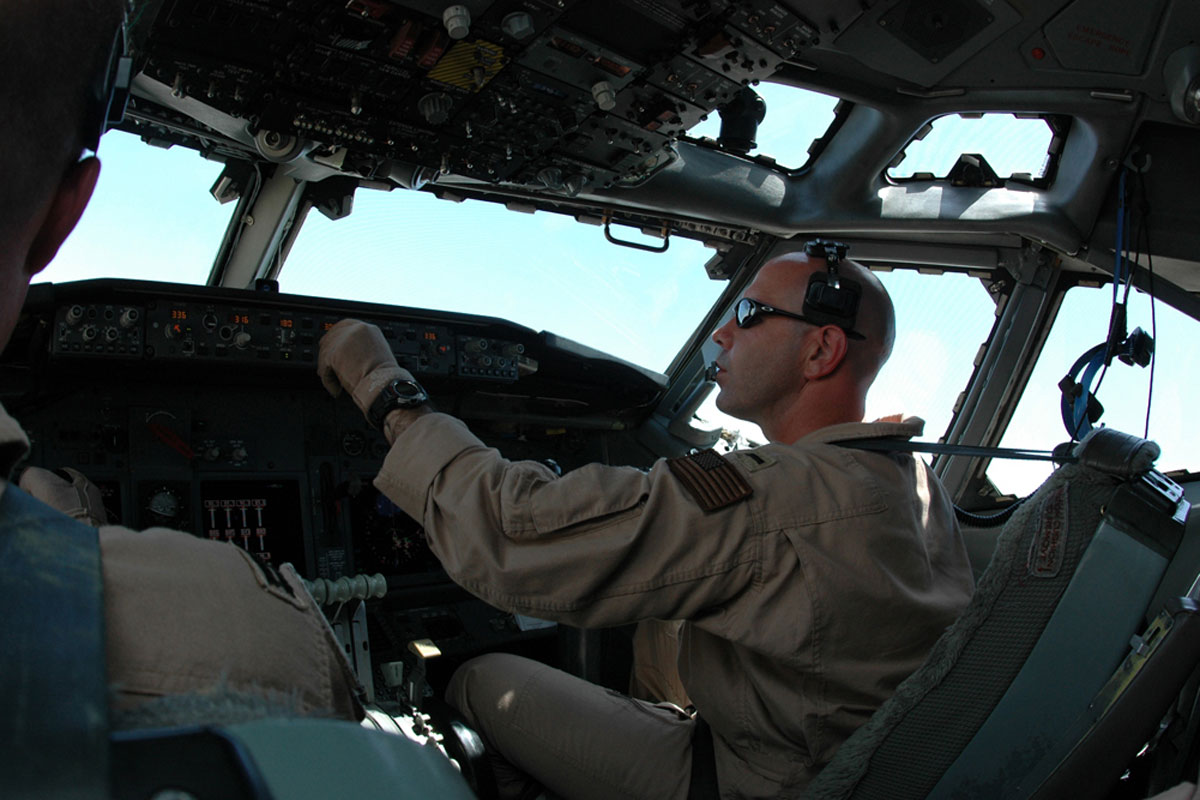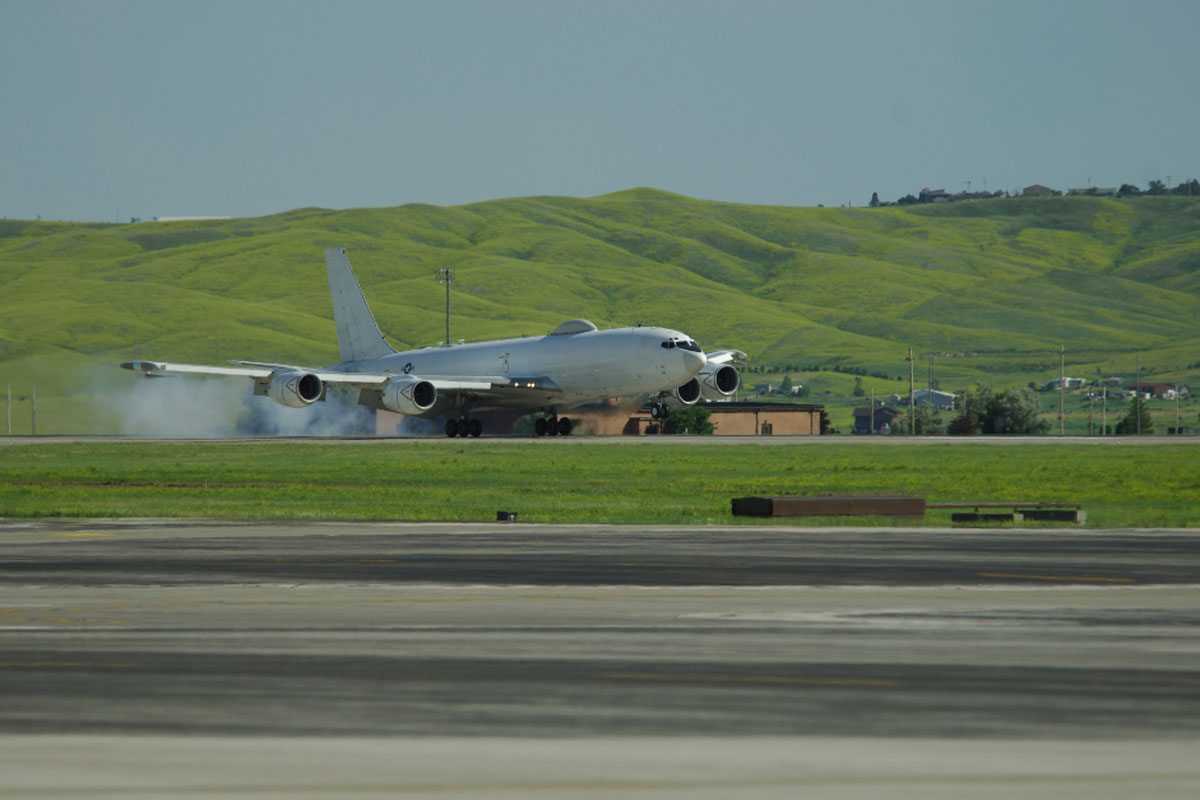Contractor: The Boeing Company.
Service: USN
Airspeed: 522 knots, 600 miles (960 km) per hour.
Ceiling: Above 40,000 feet.
Range: 6,600 nautical miles (7,590 statute miles, 12,144 km) with 6 hours loiter time.
Crew: 22
The principle mission of the E-6 Mercury is to connect the national command authority with the U.S. Navy’s nuclear missile force carried aboard at-sea ballistic missile submarines. The E-6 is a militarized version of the commercial 707 civilian airliner and carries a very low frequency communication system with dual trailing wire antennas.
The E-6B was conceived as a replacement for the Air Force's Airborne Command Post due to the age of the EC-135 fleet. The E-6B modified an E-6A by adding battlestaff positions and other specialized equipment.
The E-6B is a dual-mission aircraft capable of fulfilling either the E-6A mission or the airborne strategic command post mission and is equipped with an airborne launch control system (ALCS). The ALCS is capable of launching U.S. land based intercontinental ballistic missiles. The first E-6B aircraft was accepted in December 1997 and the E-6B assumed its dual operational mission in October 1998. The E-6 fleet was completely modified to the E-6B configuration in 2003.
Boeing derived the E-6A from its commercial 707 to replace the aging EC-130Q in the performance of the Navy's TACAMO ("Take Charge and Move Out") mission. TACAMO links the NCA with naval ballistic missile forces during times of crisis.
